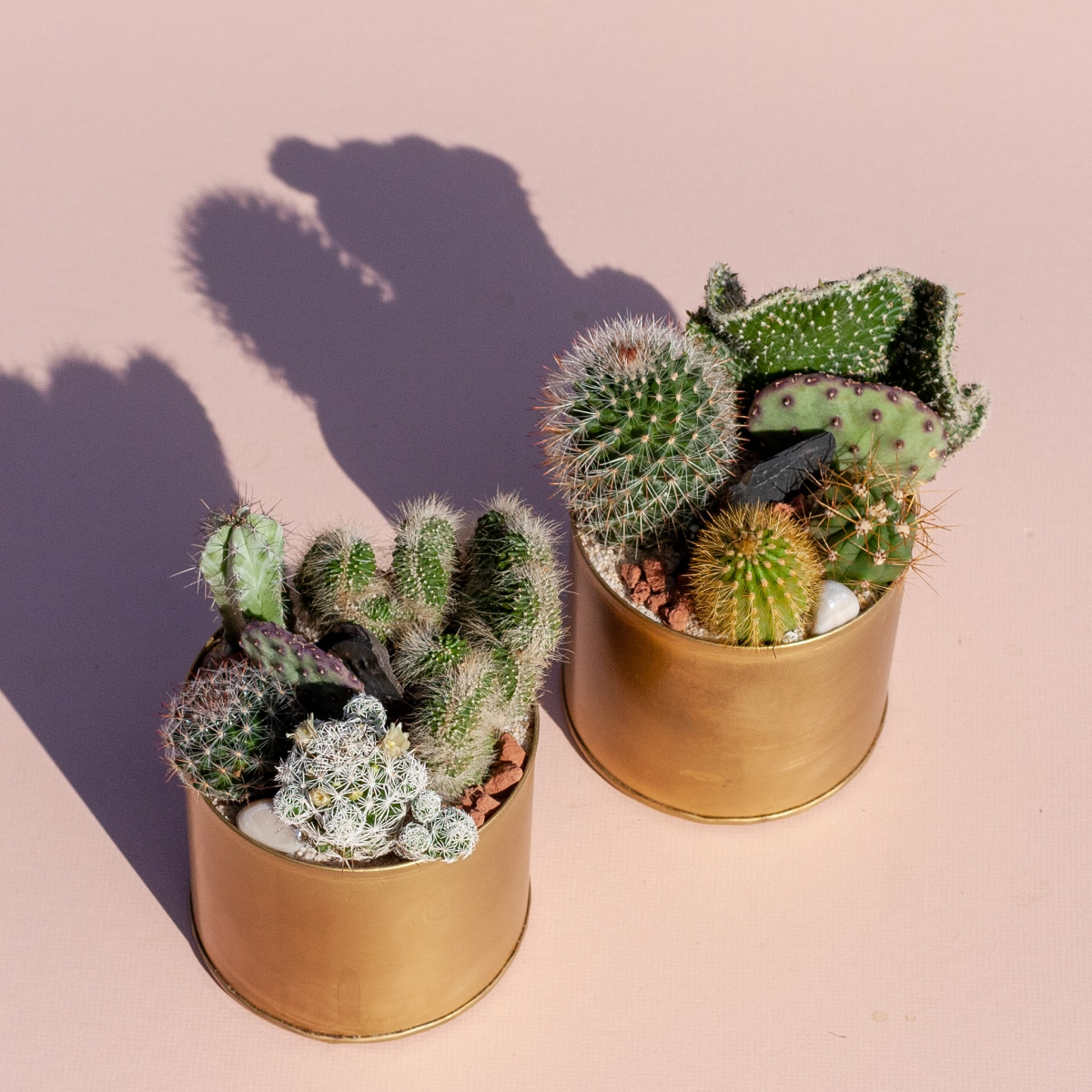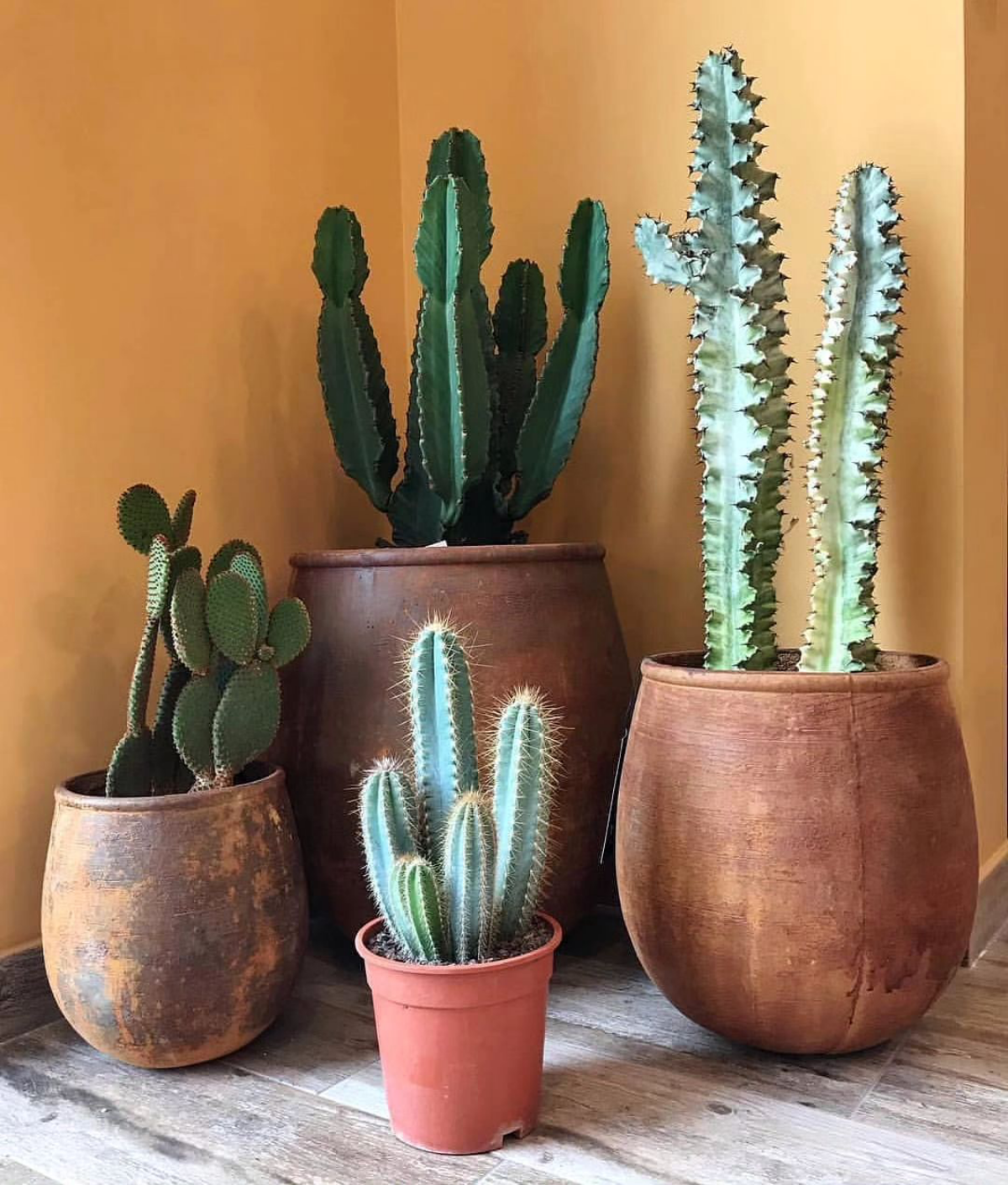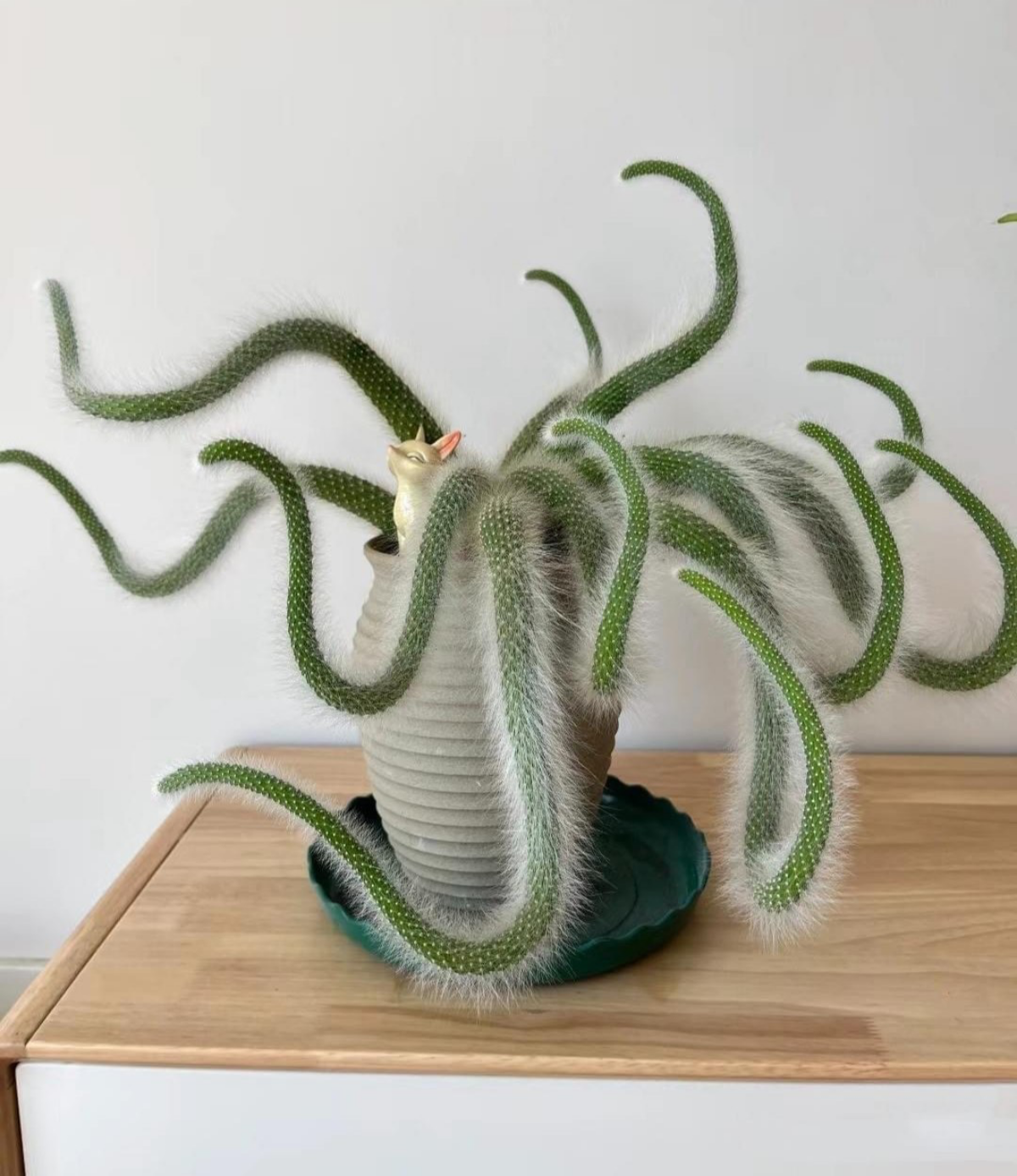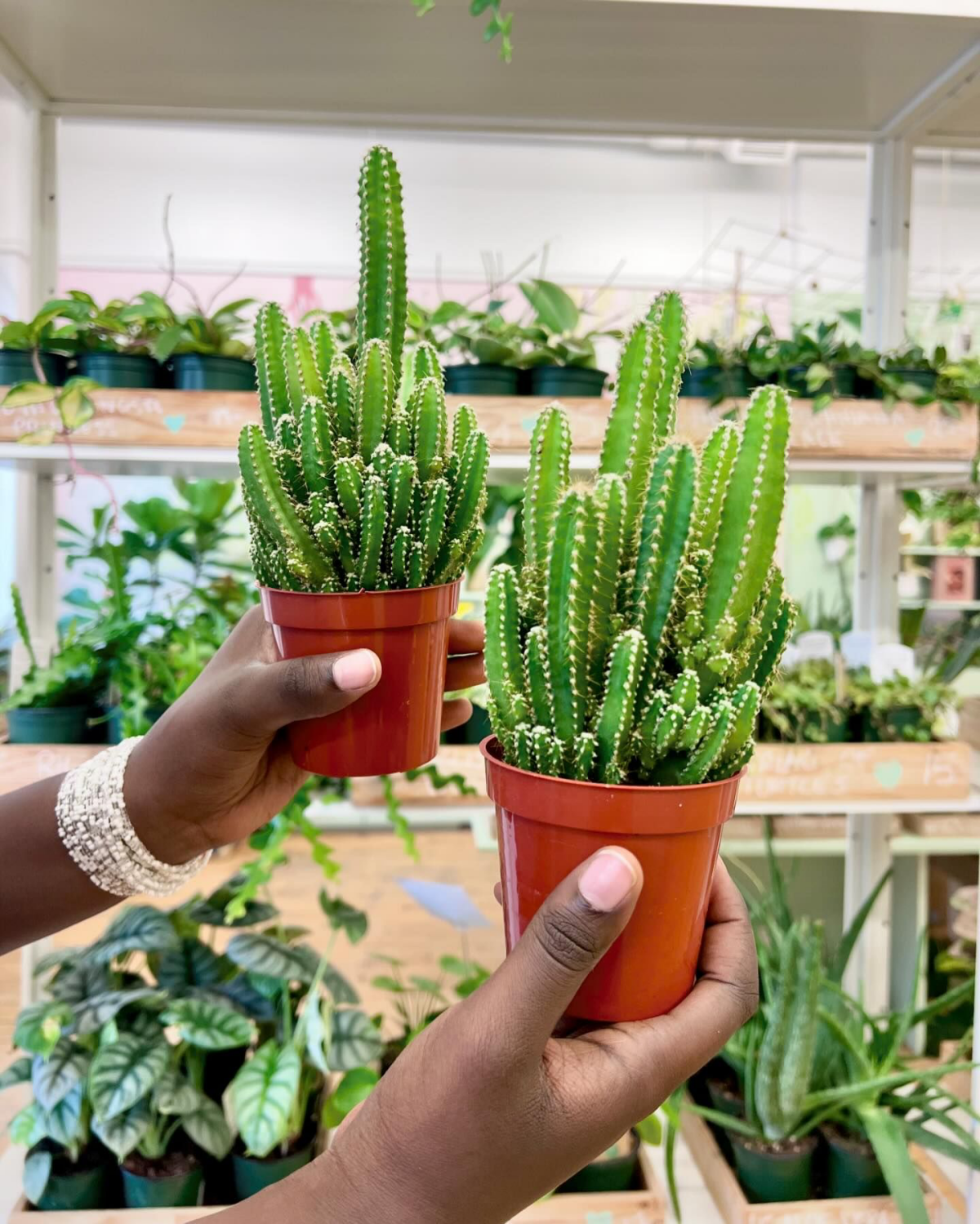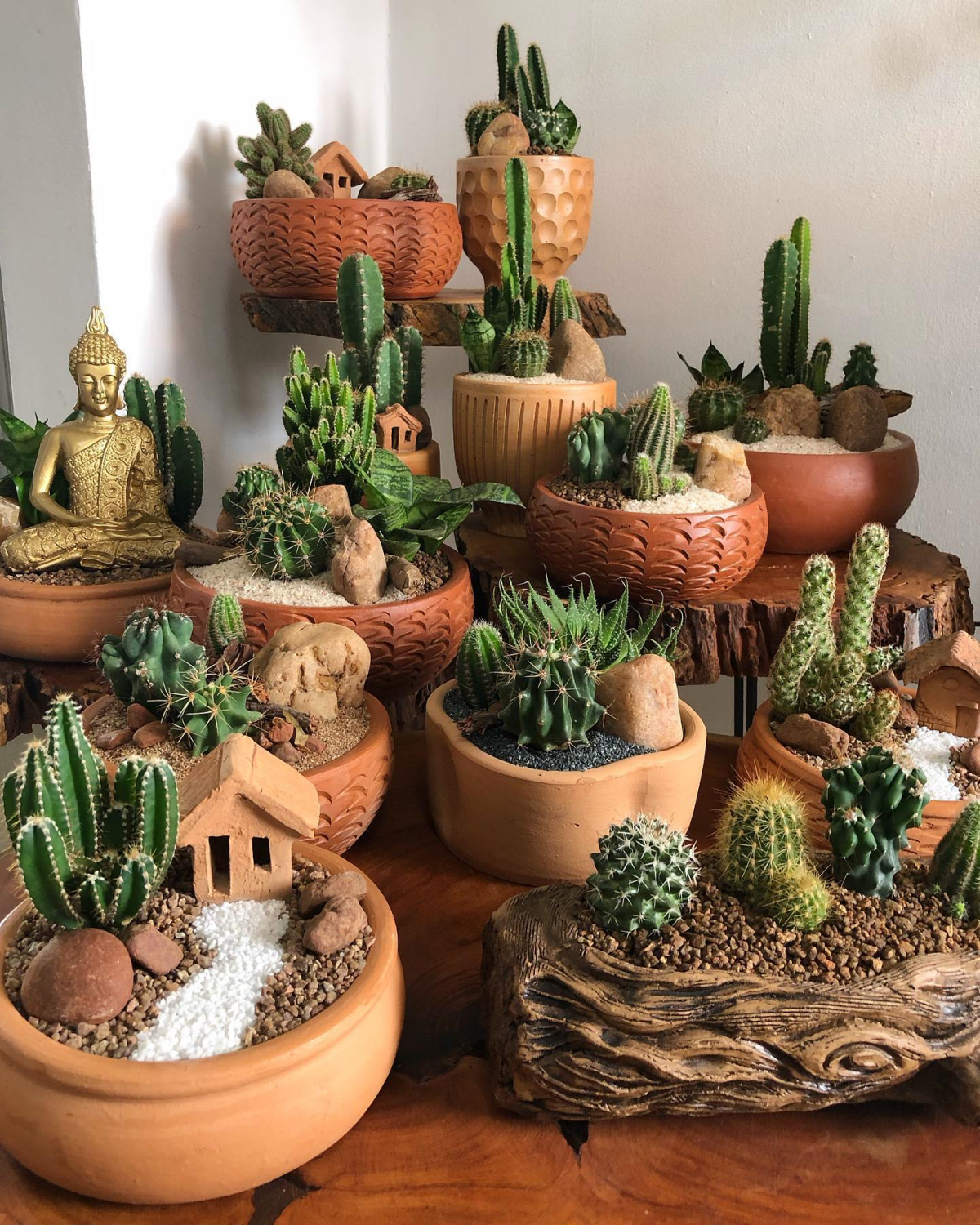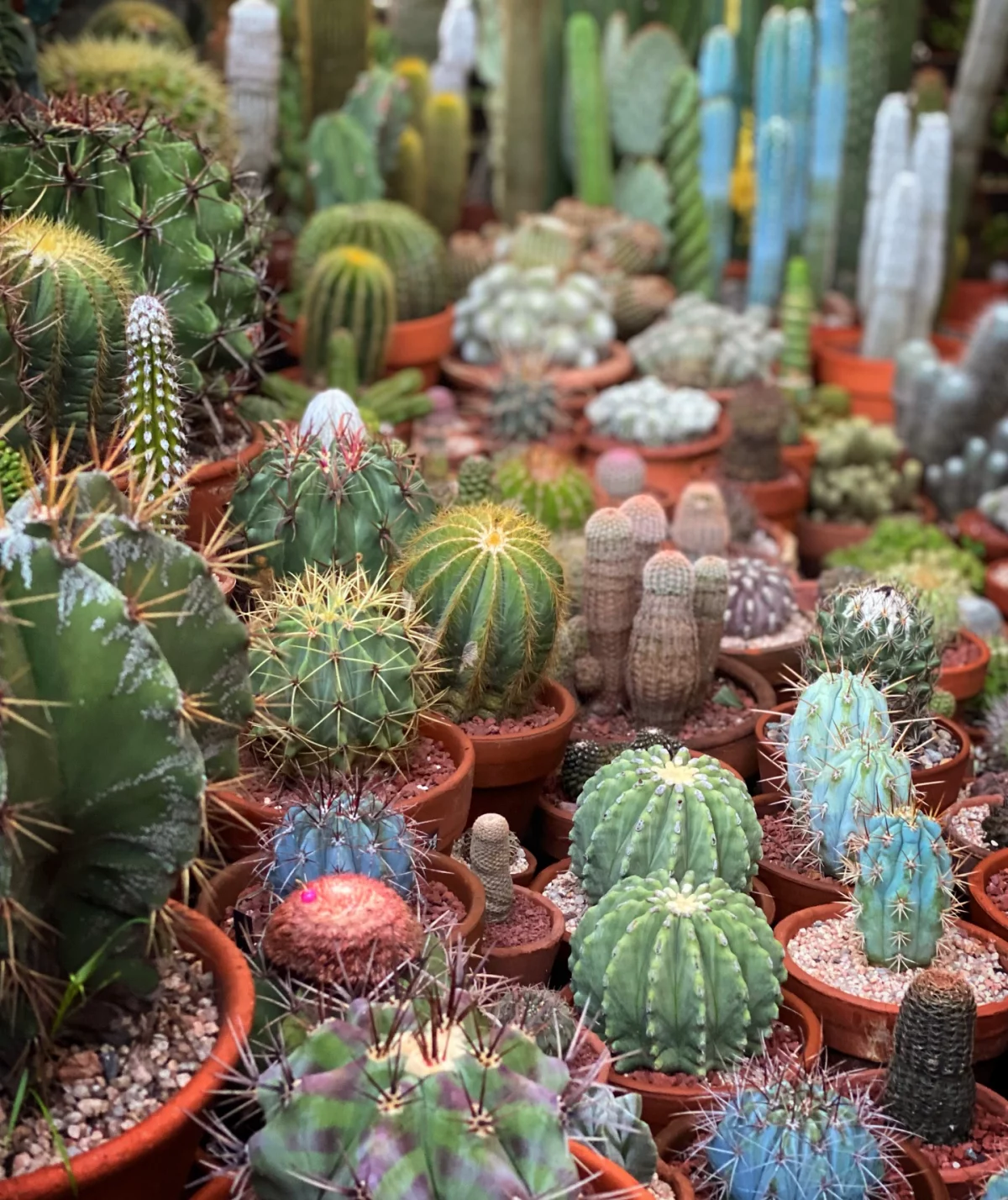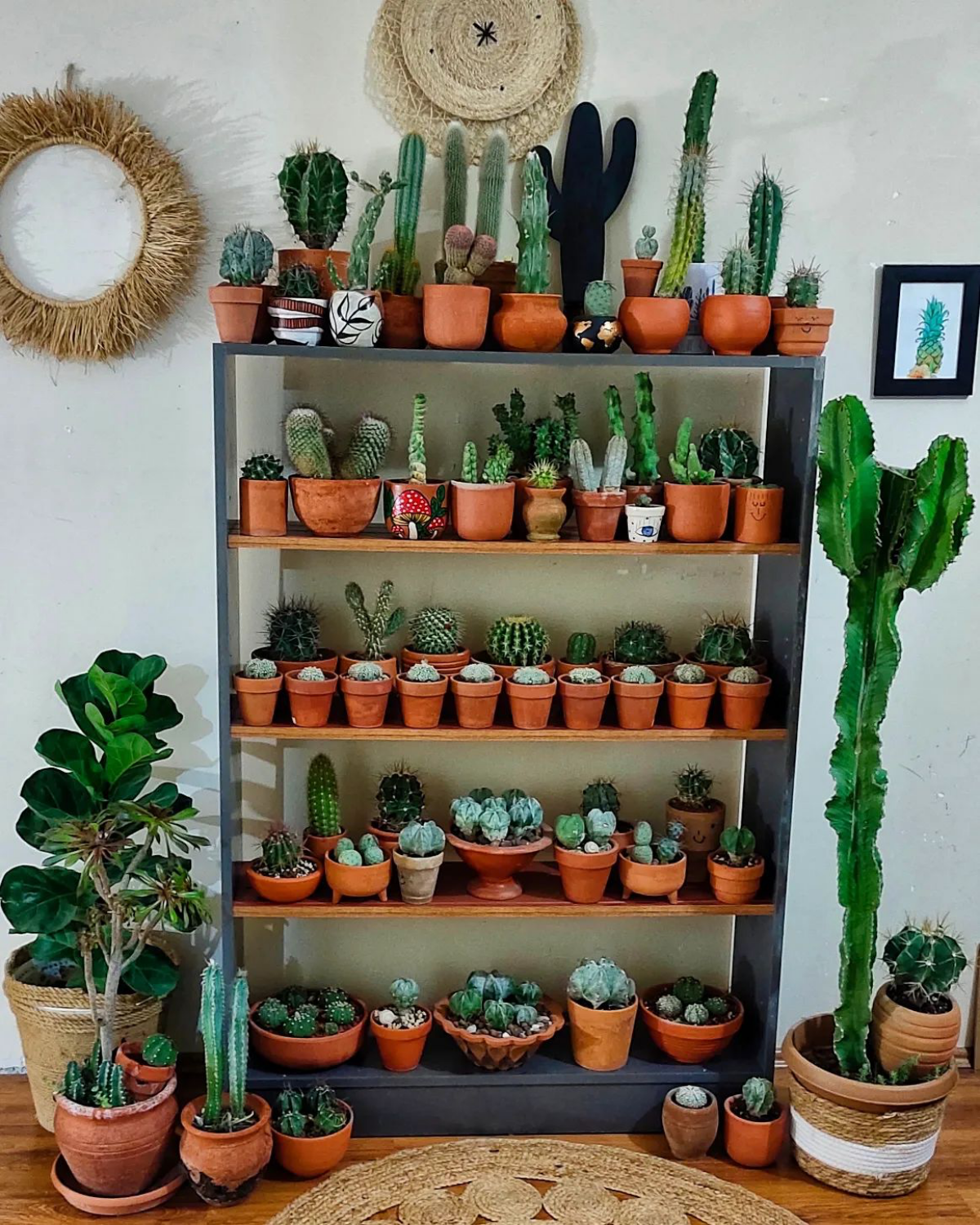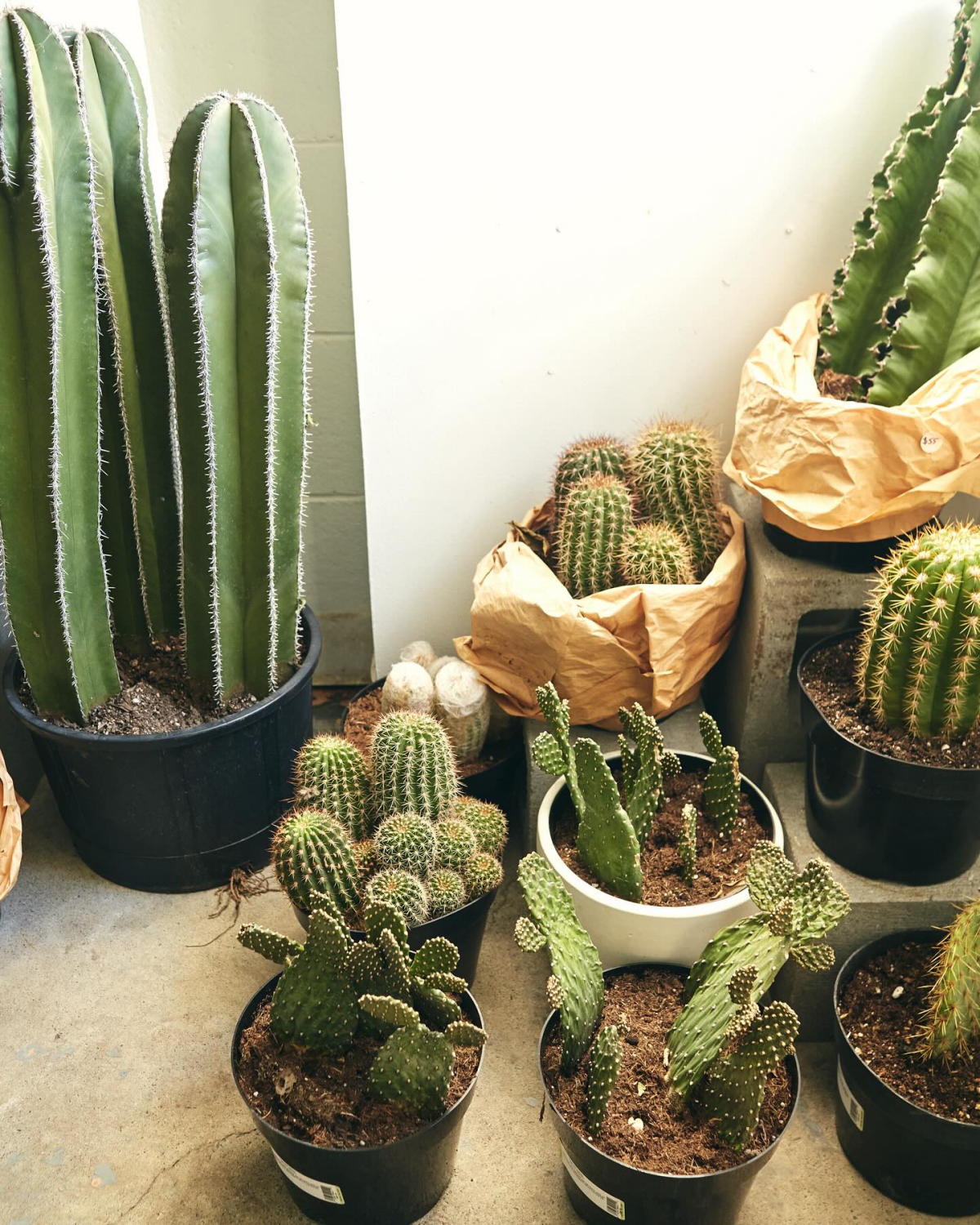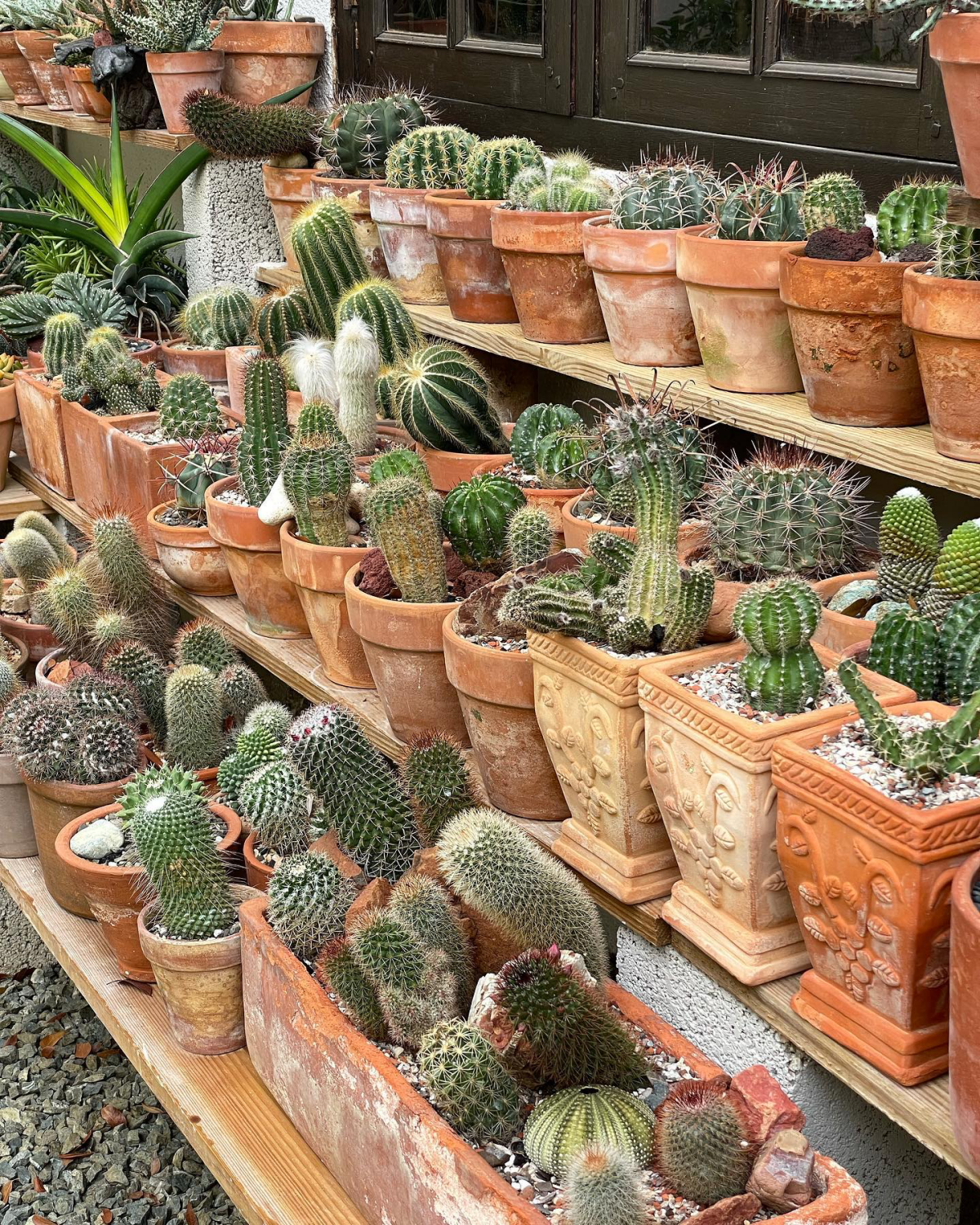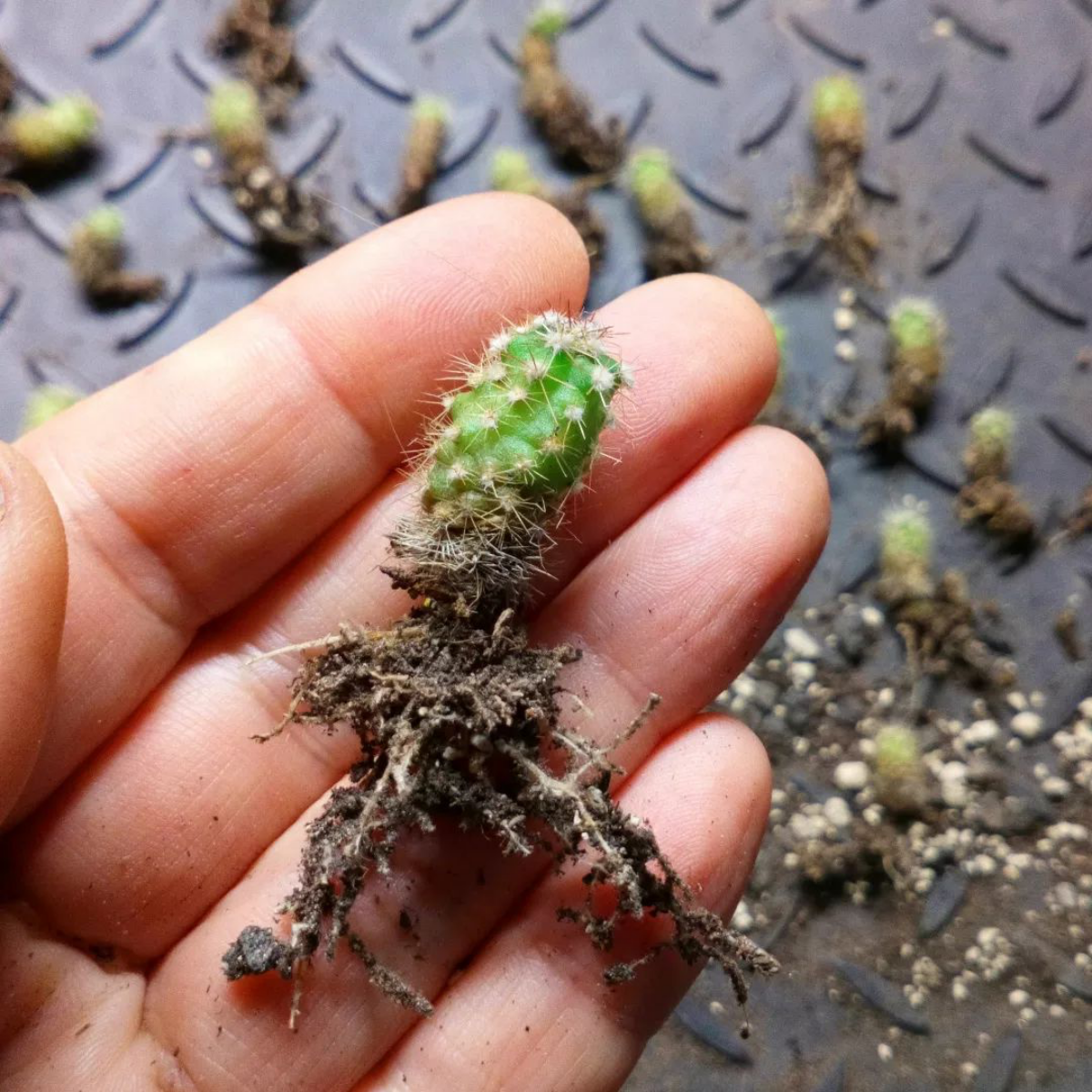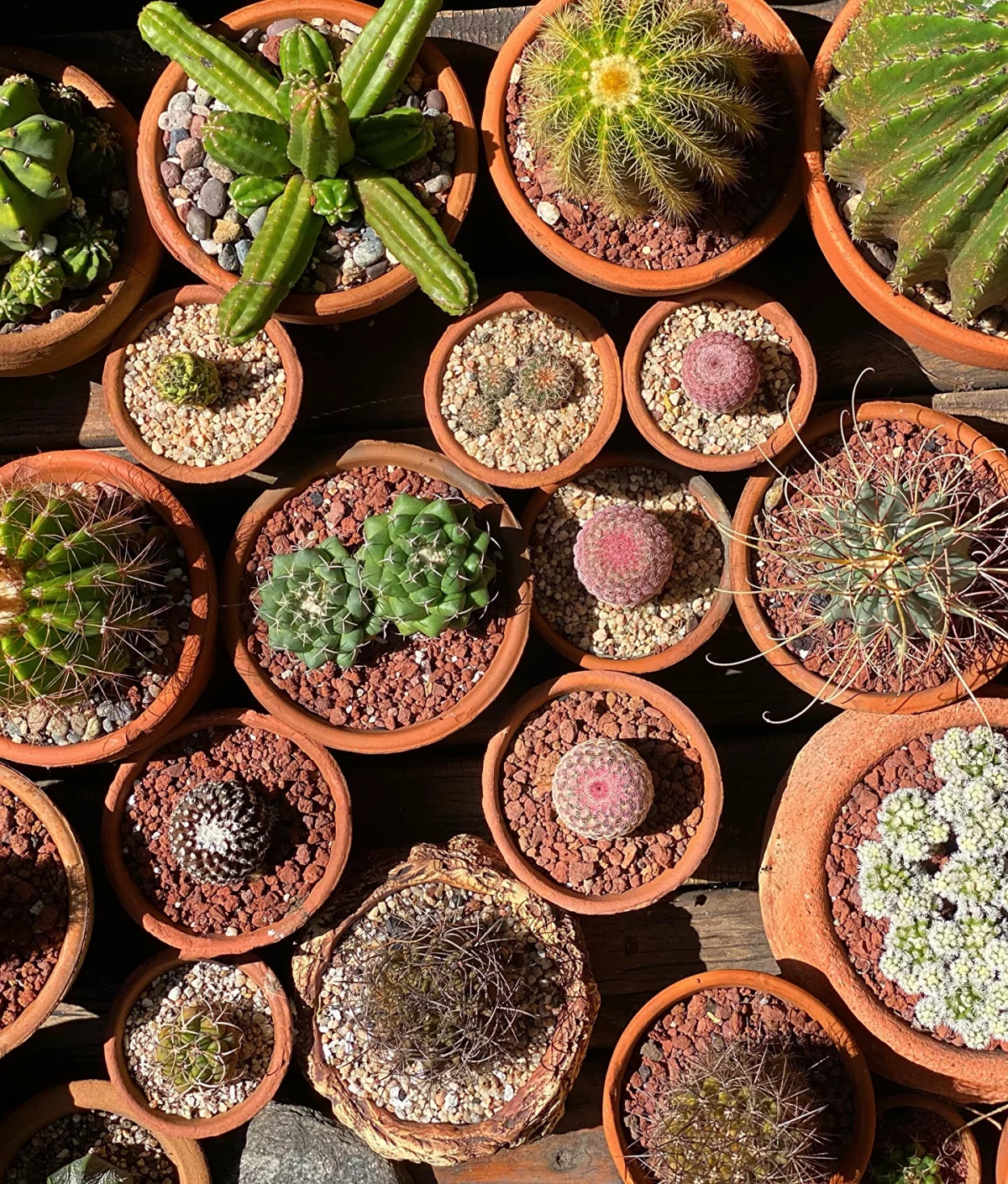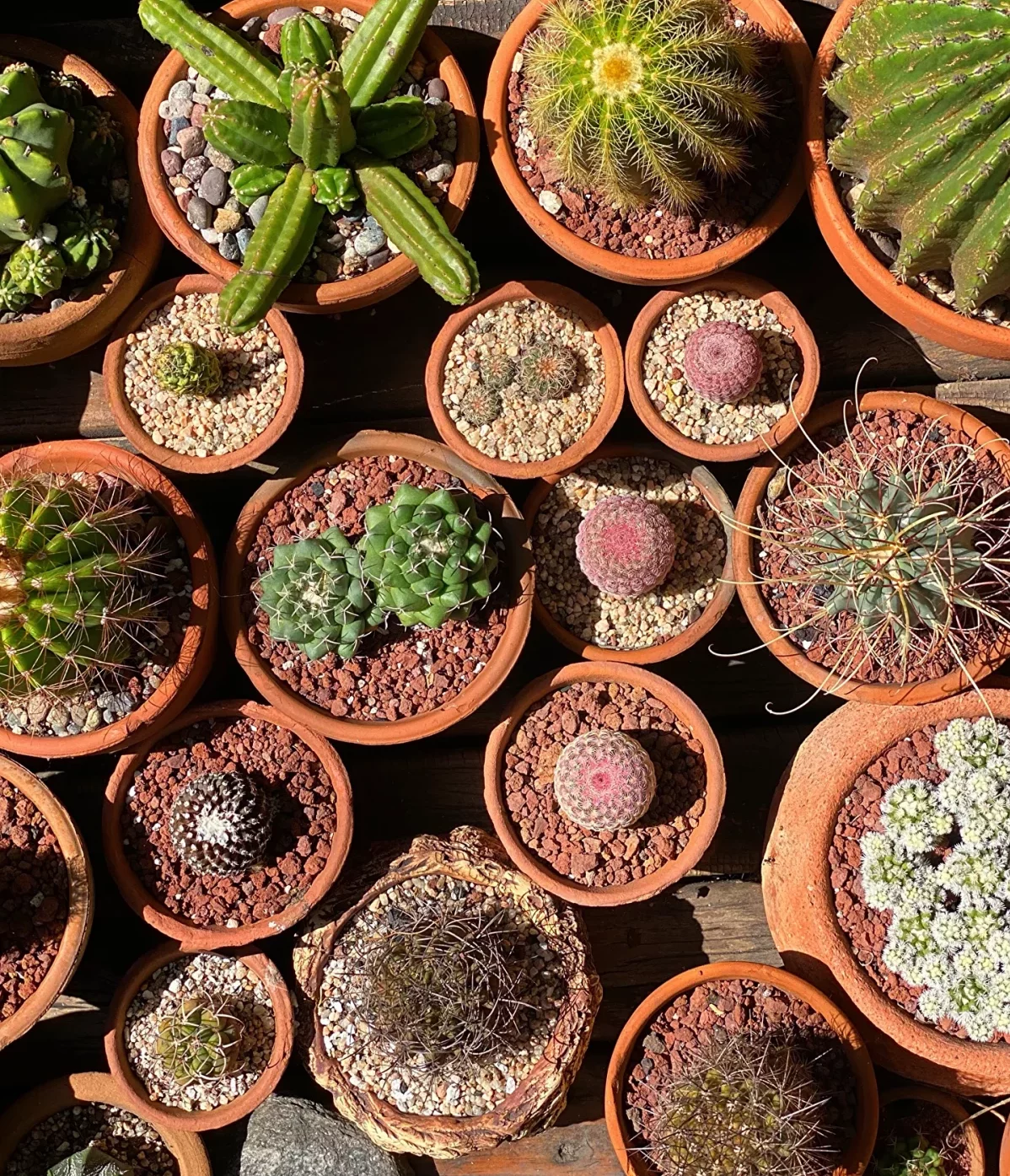Want To Grow A Cactus In A Pot? Here Is Everything You Need To Know
As a self-proclaimed cactus aficionado and long-time enthusiast of all things green and prickly, I can confidently declare that my love for these resilient desert dwellers knows no bounds. Despite my garden not being the ideal climate for these rugged beauties, I’ve turned my home into a sanctuary for a variety of cacti, each thriving in its carefully chosen container. The secret? It’s super easy to grow a cactus in a pot—as long as you know what you’re doing. That’s why today, I’m going to share with you everything you need to know about growing cacti at home with the help of expert advice.
Transform your home into a cacti paradise
In this article
Indoor Cactus Care
At home, I’m greeted daily by an array of cacti, from the towering Saguaro to the diminutive Chin Cactus. According to Jon VanZile, Master Gardener and author of “Houseplants for a Healthy Home,” all cacti come with its unique charm and set of needs. These plants have adapted to thrive in some of the most challenging environments on Earth. This makes them the perfect candidate for container gardening, provided you mimic their natural habitat as closely as possible.
Let’s dive into the spiky world of cacti in pots
The right pot
The journey to a thriving potted cactus begins with selecting the right container. Drainage is paramount, as stagnant water can lead to root rot. I prefer terracotta pots for their porous nature, helping to wick away excess moisture and ensuring my cacti’s roots remain healthy. Size is also important! Choose a pot that is not too large for your cactus, as excess soil can retain water and cause root problems. A pot slightly larger than the cactus’ root ball encourages healthy growth without risking water retention.
Choose the pot to be comfortable and breathable
Light
VanZile, writing for The Spruce, emphasizes that cacti thrive in environments with plenty of bright, direct sunlight. They should receive around 4-6 hours of direct sunlight daily. Place them near a south-facing window to mimic their natural desert habitat. However, some cacti varieties may prefer indirect light or afternoon shade, especially in hotter climates, to prevent sunburn. If natural light is limited, consider using a grow light to provide sufficient light levels, ensuring your cactus continues to grow healthily.
Bathing your cacti in sunlight is like sending them on a vacation to their desert homeland
Soil
The right soil mix is essential for cacti, requiring a blend that mimics their native, well-draining desert soils. A mix of potting soil with sand, perlite, or pumice increases drainage and aeration, preventing water from stagnating around the roots. Commercial cactus and succulent mixes are available, but you can make your own by combining two parts potting soil, one part coarse sand, and one part perlite or pumice. This combination ensures quick drainage and supports healthy root growth.
A cactus in a pot needs good soil
Water
Watering practices are often where cactus care goes wrong. Overwatering is a common issue, leading to root rot and disease. Cacti prefer the “soak and dry” method shares for Souther Living – Cecilia Thon, botanist and former plant research and development associate at Bloomscape.. This means the soil should be thoroughly watered until excess drains from the bottom, then allowed to completely dry out before the next watering. Frequency depends on the season. Water more frequently during the growing season (spring and summer) and reduce watering in the dormant season (fall and winter). Always check the soil’s moisture level before watering.
Master the art of desert rainfall with the “soak and dry” method
Temperature and humidity
Cacti generally prefer temperatures between 55°F and 85°F but can tolerate a wider range as long as conditions mimic their natural habitat. Most cacti do not thrive in high humidity environments, so ensure your space is well-ventilated. During winter, cooler temperatures are beneficial for encouraging dormancy and helping cacti to rest before the next growing season. Avoid placing your cactus near cold drafts or heating vents, as drastic temperature changes can stress the plant.
Keep the climate just right
Fertilizer
Cacti require minimal fertilization. During their active growth period in spring and summer, feeding them with a diluted, low-nitrogen cactus fertilizer once a month promotes healthy growth. Avoid fertilizing in the dormant season (fall and winter) to prevent stressing the plant with unnecessary nutrients, emphasizes Jon VanZile. Over-fertilizing can lead to rapid, weak growth and potentially harm the plant.
A little cactus snack goes a long way
Pruning
According to VanZile, pruning is not commonly required for cacti but can be necessary to remove dead or diseased segments. It also helps to promote growth, or maintain shape. Use clean, sharp tools to cut away any unwanted parts, and always wear protective gloves to avoid thorns. Make cuts near a joint or segment to encourage better healing and regrowth. Pruning at the right time, usually before the growing season, ensures the plant can recover and thrive.
Keep it stylish but functional
Propagation
Propagating cacti can be a rewarding way to expand your collection. Here’s how to do it step-by-step for cuttings.
- Choose a healthy, disease-free segment of your cactus. Ideal cuttings are firm and have no signs of damage or stress.
- Cut the segment with a clean, sharp knife or scissors. Let the cut end dry out and form a callous over a few days to a week, which prevents rotting when planted.
- Use a well-draining soil mix, ideally formulated for cacti and succulents, in a pot with drainage holes.
- Once calloused, plant the cutting in the soil, ensuring it stands upright. You may use a small stake for support if necessary.
- Initially, keep the soil slightly moist (not wet) to encourage root growth. After a few weeks, once roots have developed, adjust watering to normal cactus care guidelines.
Propagate your cacti to spread the spiky love
Identifying and Treating Pests
Common pests such as spider mites, mealybugs, and scale insects can infest cacti, weakening the plant. Regular inspections help in early detection. Treat infestations with insecticidal soap or neem oil, applying it directly to the pests. Quarantine infested plants to prevent spreading. Maintaining proper care and a clean environment reduces the risk of pest problems.
Keep an eye on your cactus in a pot
Disease Prevention and Treatment
Diseases in cacti are often related to poor cultural practices, such as overwatering or inadequate light. Root rot is a common issue, prevented by ensuring proper drainage and not overwatering. If disease occurs, remove affected parts and correct care conditions. Fungicides can treat fungal diseases, but prevention through proper care is the most effective strategy.
Nurse your cacti back to health with a dose of care and prevention
Troubleshooting Growth Issues
Stunted growth, discoloration, or abnormal growth forms in cacti can indicate care issues. A prevalent issue for indoor cactus caretakers is overwatering, especially during winter, which can cause rot at the plant’s base or tips. If the rot progresses, propagating from cuttings or, in severe cases, discarding the plant may be necessary. Synthetic fertilizers pose another risk, as their heavy metals can accumulate and harm the cactus. Cacti are vulnerable to physical damage due to their lack of protective bark or leaves, making them susceptible to infection from even minor injuries. Ensuring your cactus is healthy is vital, as a robust plant can heal and form a protective callus over wounds, preventing infection.
Every cactus crisis has a solution
Overwintering
Many cacti require a period of dormancy in cooler temperatures to rest before the next growing cycle. Reduce watering significantly and keep the plant in a cooler, but not freezing, environment (50-55°F is ideal). Avoid fertilizing during this period. Proper overwintering ensures your cactus remains healthy and is ready to grow vigorously in the spring.
Tuck your cacti in for a cozy winter nap
Best Cacti For Pots
Choosing the best cacti for pots is essential for creating an attractive and thriving indoor garden. Potted cacti offer a versatile and low-maintenance option for adding a touch of nature to any space. Those are the two main reasons why I have filled up my house with them. But the key to success lies in selecting species that naturally grow well in confined spaces and can adapt to the indoor climate.
- Christmas Cactus (Schlumbergera bridgesii): Known for its beautiful, vibrant flowers that bloom in winter, this cactus prefers indirect light and slightly more water, making it an exceptional choice for indoor environments.
- Star Cactus (Astrophytum asterias): This small, dome-shaped cactus features a unique star-like appearance and seldom grows larger than 6 inches, making it perfect for pot culture.
- Golden Barrel Cactus (Echinocactus grusonii): With its spherical shape and striking yellow spines, this cactus adds visual interest to any collection. It’s slow-growing and can be kept in the same pot for years.
- Bishop’s Cap (Astrophytum myriostigma): Recognizable by its smooth, ribless surface and often star-shaped body, the Bishop’s Cap is low maintenance and thrives in well-draining soil, making it ideal for potting.
- Pincushion Cactus (Mammillaria): A diverse genus with many small species that are perfect for pot cultivation. Their compact size and minimal water needs are well-suited for indoor gardens.
- Zebra Cactus (Haworthiopsis attenuata): Not a true cactus but often grouped with them, this succulent is beloved for its striking, striped leaves and tolerance of low-light conditions, making it an excellent choice for indoor settings.
- Moon Cactus (Gymnocalycium mihanovichii): This cactus is grafted onto a rootstock cactus for support, featuring a colorful top. Its small size and unique appearance make it a popular choice for decorative pots.
- Fairy Castle Cactus (Acanthocereus tetragonus ‘Fairy Castle’): Resembling miniature medieval castles, this slow-growing cactus is ideal for long-term pot living, requiring minimal care and offering an interesting architectural form.
Pick any cacti you like
How to Grow Indoor Cactus From Seed
Growing indoor cacti from seed is a fascinating and rewarding endeavor that allows gardeners to witness the full cycle of life of these resilient and captivating plants. While the process requires patience and attention to detail, the joy of seeing the first sprouts emerge is unparalleled.
Acquiring Cactus Seeds
Obtain cactus seeds either by collecting them from a flowering plant or purchasing packaged seeds from a nursery, as some indoor cacti might not flower.
Stratification Process (if required)
For seeds that require stratification to mimic winter conditions, place them in moistened peat. Then, store them in the refrigerator for approximately four to six weeks until they crack open. This process helps simulate winter, encouraging germination.
Prepare the Pot and Soil
Fill a shallow tray or pot with drainage holes using a well-draining cactus potting mix. This setup ensures proper moisture management crucial for seed germination.
Sow the Seeds
It’s time to sow the seeds! Spread the stratified (if needed) or unstratified cactus seeds evenly over the surface of the prepared soil. Do not bury them deeply. Cactus seeds should be planted as deep as they are wide.
Cover the Seeds
Gently sprinkle a thin layer of sand or fine gravel over the seeds. This helps anchor them without burying them too deeply, allowing for adequate light penetration and moisture retention.
Create a Greenhouse Environment
Keep the soil lightly moist by covering the tray or pot with plastic wrap or a glass pane. This setup retains humidity, mimicking a greenhouse environment, which is conducive to seed germination.
Provide Light and Warmth
Place the setup in a bright location out of direct sunlight to avoid scorching the seeds. Maintain a temperature between 70-75°F (21-24°C), ideal for cactus seed germination.
Monitor Germination
Most cactus seeds will germinate in about three weeks. After germination begins, gradually remove the plastic covering during the day to allow seedlings to acclimate to less humid conditions.
Transplant Seedlings
Once the seedlings have grown strong enough, usually in about six months, carefully transplant them into individual pots. This stage requires patience and gentle handling to avoid damaging the delicate seedlings.
Embark on a seed-to-sprout journey
How To Repot a Cactus
Repotting a cactus is an essential task to ensure your spiky friend continues to thrive, providing it with fresh soil and more room to grow. Before starting, choose a new pot that is slightly larger than the current one and ensure it has adequate drainage holes. Wear thick gardening gloves or use folded newspapers or foam to handle the cactus safely to avoid thorns. Begin by gently removing the cactus from its current pot, tapping the sides and bottom to loosen the soil. Inspect the roots, trimming away any dead or rotting parts with sterilized scissors or shears.
Prepare the new pot by filling the bottom with a layer of cactus potting mix, which should be well-draining to prevent water retention. Carefully place the cactus in the center of the new pot and fill around it with more soil, ensuring the plant is positioned at the same depth it was previously. After repotting, wait about a week before watering to allow any damaged roots to heal, minimizing the risk of rot. This process, done every few years or when the cactus outgrows its pot, encourages healthy growth and vibrant life.
Repotting is like moving day for your cactus
FAQs
What is the best cactus to grow in pots?
The Christmas Cactus (Schlumbergera bridgesii) is often considered one of the best cacti to grow in pots due to its beautiful blooms, adaptability to indoor environments, and relatively easy care requirements.
Do cactus do well in containers?
Yes, cacti do well in containers. They have adapted to survive in harsh environments, making them well-suited for pot cultivation. The key is to use well-draining soil and ensure the pot has good drainage.
Is there a cactus that stays small?
The Pincushion Cactus (Mammillaria) remains small, making it perfect for indoor pots. These cacti are compact and slow-growing, with many varieties staying under 6 inches in height.
Can potted cactus stay outside?
Potted cacti can stay outside in suitable climates, primarily if they mimic the cactus’s natural habitat, with plenty of sunlight and low humidity. However, they may need to be brought indoors or protected during cold weather or excessive rain.
What is the easiest cactus to care for?
The Zebra Cactus (Haworthiopsis attenuata), though technically a succulent, is often grouped with cacti and is one of the easiest to care for. It tolerates low light conditions better than most cacti and has minimal watering requirements.
Are plastic pots good for cactus?
Plastic pots can be suitable for cacti as long as they have adequate drainage holes. However, terracotta or clay pots are generally preferred because they allow the soil to dry out more evenly and quickly, reducing the risk of overwatering.
What is the lifespan of a cactus?
The lifespan of a cactus varies significantly among species, with some living only a few years to others surviving for over 200 years in the right conditions. Many common household cacti can live for decades with proper care.
Arm yourself with cactus knowledge
Growing a cactus in a pot has been one of my most rewarding gardening ventures. Each cactus in my collection tells a story, a testament to the resilience and beauty of these extraordinary plants. Whether you’re a seasoned gardener or a curious newbie, the world of potted cacti is inviting and endlessly fascinating. With a bit of knowledge and a lot of love, you too can create your own desert oasis, right in the heart of your home.
Growing a cactus in a pot is a great experience
